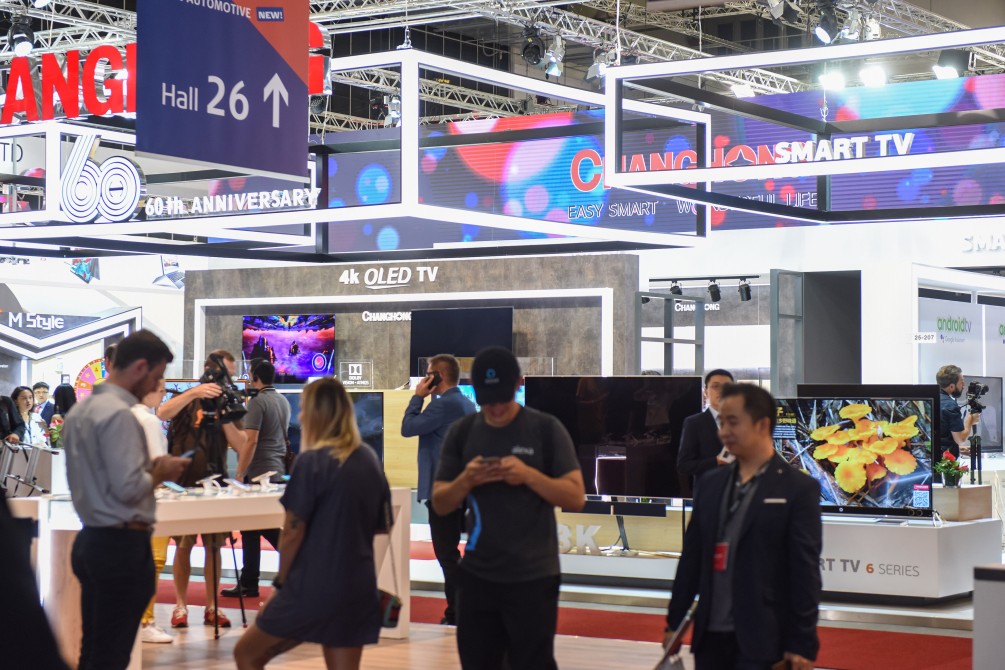The big topic at IFA this year was 8K as Samsung reacted to the success of LG Display’s OLEDs in the premium TV business. Samsung remains the biggest TV brand, by volume and value, but the firm’s value share has fallen further than the volume and that means that the company’s profitability must have been hit. As with the firm’s monitor business, as Samsung reduces its capacity and interest in LCD, because of Chinese investment, a reduction in the value of the vertical integration back into the supply chain also puts extra pressure on the TV business to make a profit.

Samsung put on a good show and is doing many good things to boost its TV business, but it feels as though is swimming against the tide. Long time Display Monitor readers will know that Samsung tried for a long time and with huge resources to develop its own large OLED business, based on RGB OLEDs with polysilicon substrates. However, the company was never able to make those OLEDs with a reasonable yield and eventually gave up. As I wrote in a Display Daily a year ago, after IFA, (8K is Closer than You Think ), that means that the company will move on to 8K.
Now, I have talked a lot about the research that NHK did to show that viewers could see a difference when shown content at 8K, but the reality is that for a great experience, you need content and distribution as well as display. Samsung is doing a good job on up-scaling adding AI to the kind of up-scaling based on look-ups that has been used by good TV makers for several years and there is a clear difference in moving to 8K. However, at the moment, all we are seeing is the demonstrations by vendors. I never really believe tests until I can control the source content. For example, it has seemed to me very clear that at 8K, motion artefacts become much more apparent and I think that 8K will really need 100Hz or 120Hz. However, there was little or no comment on HFR at IFA. It will be interesting to see if it’s a topic at IBC.
Buyer’s remorse (the problem that buying technology early that then doesn’t work properly when the mass market moves) is a big potential factor. Even at IFA, Samsung’s staff confirmed that to support native 8K via HDMI in its new TVs, HDMI 2.1 will be needed and that’s not in the TVs at the moment. The whole control box will need to be upgraded and Samsung has a mixed record on supporting this kind of upgrade, so it does run the risk of upsetting consumers quite a lot.
We did see some signs of interest in QDoG technology, exploiting the Corning glass LGPs, but because these depend on edge lighting and the trend at the high end is towards FALD, the impact may be limited. MiniLED backlights were shown at the event, but mostly in future products that we may see properly in 2019. Those should help LCD to compete better at the high end of the market.
The OLED TVs at the show were distinctly dull. The changes in the panels from LG Display were very small this year, and so there was little change in the sets, and no sign of the smaller OLED panel that LG promised for Europe nearly a year ago. Although the 8K 77″ was shown by LG Electronics, there are no launch plans. LG Electronics didn’t show the roll-up TV, either.
MicroLED was only shown by Samsung (and we report that it had some artefacts) and by LG (who had a poor-looking set) so it looks as though it may be CES before we see something really different.
Anyway, I was a bit surprised to see nothing at IFA on the new Nvidia graphics cards, as they have been launched for consumers at Gamescon, but perhaps IFA was too soon and Nvidia has too few samples. Other things we didn’t see were a presence by HP, which is pretty strong in consumer PCs, but was only present by the provision of some PCs for the gaming area. We also noted that Euronics, which usually has an interesting press event on the development of retail channels in Europe, had no PR event this year. However, given that the last press release on its website is from 2017, it seems that Euronics does not see the marketing of itself as very important at the moment. Bizarre for a retailer!
I thought that the show was a bit quieter this year and it looks as though attendance was largely flat from the last couple of years at 245,000 visitors, including 150,000 trade visitors.
Analyst Comment
We got an update to the original report. Later, when samples started to arrive for review, Samsung confirmed that it will offer free upgrades to the connect box to HDMI 2.1 when it arrives next year. (BR)

